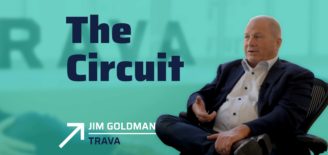Should you insource or outsource your tech company’s marketing team?
Your ability to attract, convert, and retain users hinges largely on your marketing strategy and execution. You already know this, but what you might not know is how to build a high-ROI marketing team. Which functions should you manage in-house, and which should you outsource?
It’s clear that every tech company needs a marketing team. Figuring out the who, when, and how equation is a little bit trickier.
Let’s start by looking at extremes: an internal marketing team versus outsourcing 100% of marketing functions. Most companies will benefit the most from having a combination, save for extenuating circumstances. Startups, for instance, may benefit from focusing on what they do best while outsourcing their marketing, yielding more output at a lower cost. Organizations whose internal infrastructure doesn’t support marketing teams (e.g. sales organizations or highly technical businesses) may also benefit from outsourcing all of their marketing.
Those exceptions aside, it’s in your best interest to take a hybrid approach: hire marketing resources internally and add outsourced elements where needed.
Here’s why:
- In the fast-paced world of technology, things happen every single day in your business that you can’t possibly communicate to an outsourced team in an effective way without leaving out some details. It’s good to have internal resources who own your marketing and know what’s going on within your organization and how that’s impacted by the outside world. Your internal marketing team will also have a better chance of ensuring cohesion between marketing and sales, with consistent messaging and goals across the organization.
An outsourced team, however, can be privy to what’s going on and support you in specific functions; it’s important to be strategic in how you use them and how they will support your organization.
- In an organization without a marketing department, top leaders invariably get involved in marketing. The problem with that is they often lack the know-how to discern best practices from poor ones, or to set and manage reasonable expectations. They may not even realize marketing performance metrics differ from sales metrics.
Put simply, leaders without rich marketing experience are more likely to make costly mistakes. Tech founders started their businesses for a reason, and they should focus on what they do best: leading the organization.
In most cases, a hybrid approach to building a marketing team always wins.
Considerations for your first or essential hires
First, consider which activities can’t or shouldn’t be delegated to an external resource. For example, a company serving clients that require a high degree of confidentiality might not be comfortable having a contractor interface with those clients to capture success stories.
Second, should you lead strategy internally and hire out the tactical execution, or the other way around — manage execution while you hire out the strategy piece? Or do you need both strategy and tactical execution to be managed in-house?
We’ve seen companies successfully do both or a combination thereof. Either way, it’s always good to get an outside perspective because, sometimes, you’re just too close to your product or service.
3 essential in-house functions
Granted, different companies have different marketing needs and budgets. With that in mind, we’ll focus on three essential functions required, at a bare minimum, for an effective marketing team:
Strategy: Someone who owns the marketing strategy internally, even if you’ve hired an outsourced strategist.
Tactics: Someone who manages tactical execution, such as writing content, managing social media, PR outreaches, email campaigns, etc.
Data/Operations: Someone responsible for developing processes for workflow improvements, data integrations, identification and scoring of inbound leads. (This person may not be solely dedicated to marketing.)
Commonly outsourced functions
Having the strategic, tactical and operational roles filled in-house, functions you can outsource effectively include website development, graphic design, content development, technology selection, marketing automation setup and consultation, among others.
In our experience, strategy, foundational messaging and social media can be developed in collaboration with an external resource, but should never be delegated 100% to an outsider if you are not a startup or already started building a marketing team.
The best of both worlds
All things considered, your marketing dollars may be best spent by combining internal and outsourced teams. In this scenario, you benefit from having internal professionals who are hyper-focused on your marketing outcomes, day in and day out.
At the same time, an outsourced resource can bring you the value of an entire team for the cost of one employee, given the overhead savings. With those savings, you can invest in upskilling your in-house team or growing your company in other ways. You also get the benefit of an external perspective, avoiding tunnel vision and mistakes.
Need to reset or enhance an existing team? Get their input. Let them tell you the gaps, challenges and opportunities they’ve grappled with in the day-to-day management of your marketing strategy, tactics and operations. Give them a voice and opportunity to identify solutions and grow into their desired roles, with the support of outsourced functions.







































